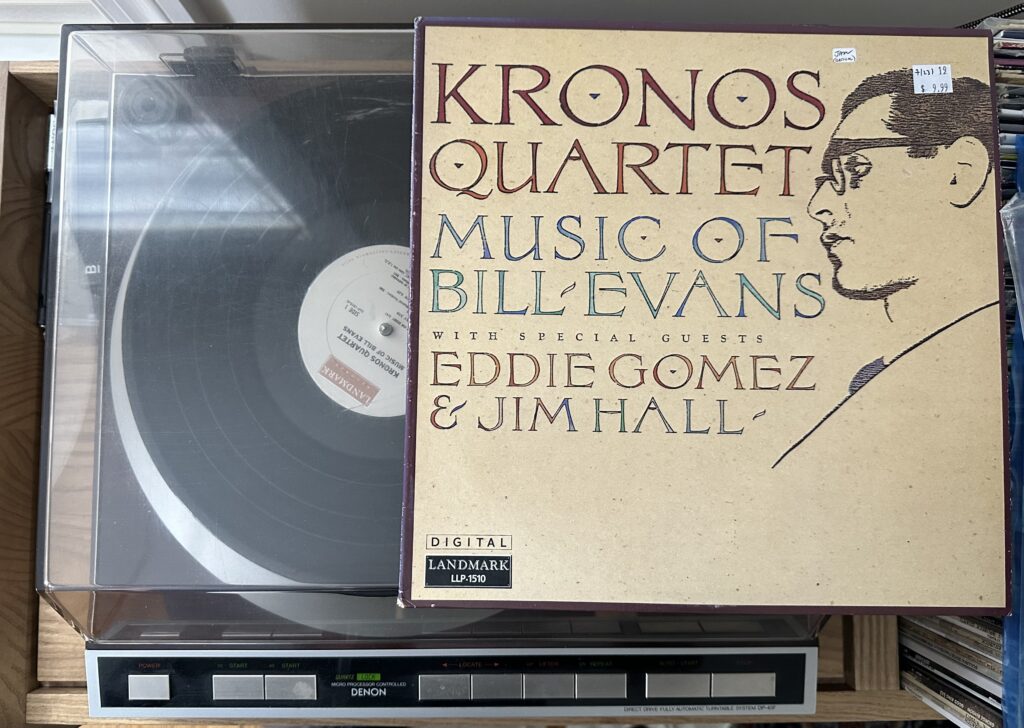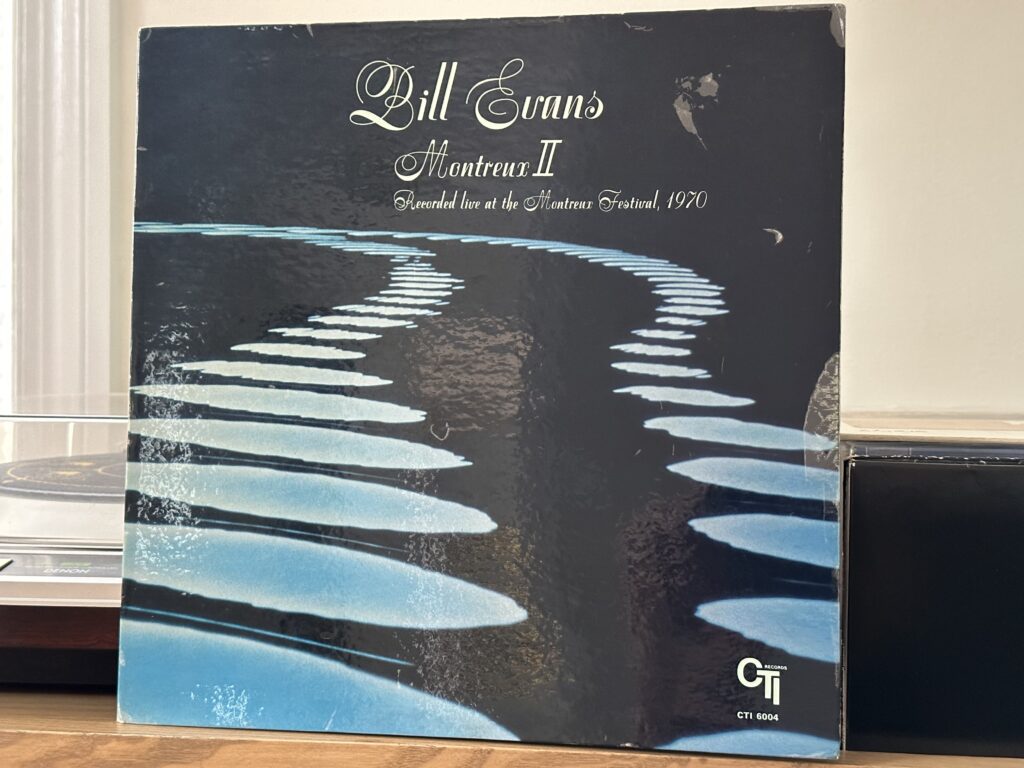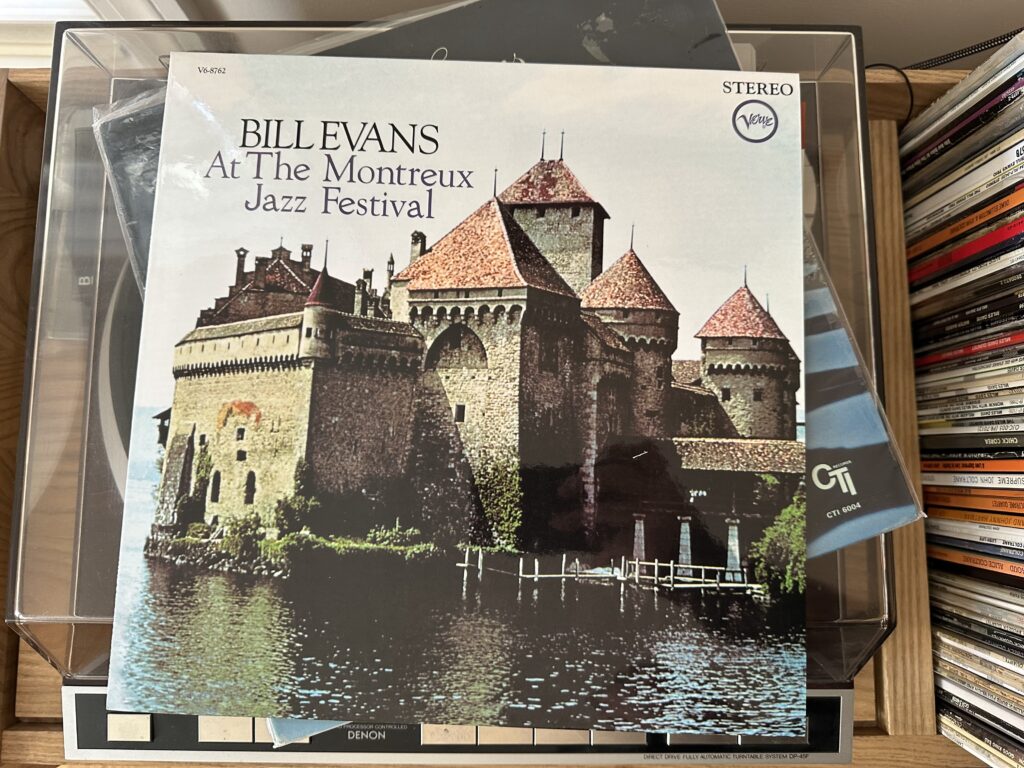
Album of the Week, March 4, 2023
Over the albums of the past few weeks we’ve listened to the Bill Evans Trio play an assortment of covers and original Evans compositions. Today’s record pays tribute to Evans the composer—with help from of his collaborators—in an unusual form: the string quartet.
Violinist David Harrington formed the Kronos Quartet in Seattle in 1973, but soon relocated to San Francisco and the classic line-up—John Sherba on second violin, Hank Dutt on viola, and Jean Jeanrenaud on cello—was in place by 1978. The group focused on modern repertoire but did not limit itself to classical music, and its second major label release was 1985’s Monk Suite: Kronos Quartet Plays Music of Thelonious Monk, featuring arrangements by Tom Darter and guest appearances by Ron Carter and Chuck Israels on bass. The album was a surprise hit, and the group followed it in 1986 with Music of Bill Evans, which also featured arrangements by Darter and guest appearances by Eddie Gómez and by guitarist Jim Hall. In another connection to Evans, the record was produced by Riverside Records founder Orrin Keepnews.
The arrangements throughout begin as transcriptions of the original trio performances, then branch out to add some solo opportunities for members of the quartet and their guests. The solos by Gómez on “Waltz for Debby” and “Very Early” shine brilliantly in this context, with a bite and snap on the opening number and a meditative glow on the second. A little seems lost in translation in the string solos in “Debby,” though, where the tone feels a little like a hoedown. One thing the quartet gets right in the opening number, though, is the fluidity of the time in the chorus, with the first rendition coming across as a bouncy swing and the second as a time-shifted, smeary triple rhythm.
“Nardis” is a showcase for Gómez, who takes the opening solo with some ferocity. The intensity diminishes a little with the entrance of the violin solo, but overall it’s a fine rendition of the Miles/Evans classic, particularly the finale. “Re: Person I Knew” captures the shifting harmonic colors of the Evans classic (anagrammatically named for Keepnews), with Jeanrenaud’s cello ably providing the melodic and harmonic grounding originally provided by Chuck Israels’ bass. Of all the performances here, it translates best to the quartet form.
“Time Remembered” is an exploration of the harmonic depths of Evans’ ballad playing. Hearing the string parts, one is tempted to go back and listen to the original recordings and revel in the newly clarified harmonies and chords, which sometimes seem to pass by too quickly and unremarked-upon in the trio recordings.
Jim Hall joins the quartet for the next three works: “Walking Up,” “Turn Out the Stars,” and “Fire.” As Keepnews writes in the liner notes, the outer two works of this “mini-suite” “could help destroy the myth that Evans was merely a master of slow tempos”; though the performance of “Walking Up” does not reach the velocity that Evans reached in his short-lived quartet with Jack DeJohnette, the energy is there, especially when Hall’s guitar begins to explore the harmonic complexities of the tune. “Turn Out the Stars,” by contrast, is a deeply introspective work, made all the more poignant by Hall’s unaccompanied, spontaneous closing solo in memory of his friend.
“Peace Piece” closes the album. The quartet unhurriedly explores this great work by Evans that would later be mined by Miles Davis for “Flamenco Sketches,” with the second violin, viola and cello sketching the hypnotically repeating chords of the left hand and Harrington playing a transcription of Evans’ right hand. Here again in the string transcription, the brilliant strangeness of Evans’ harmonic senses shine more clearly, giving us a better appreciation for the genius of his conception.
Though the recording succeeds brilliantly both at illuminating Evans the composer and the performer, this would be the last of the Kronos albums to be devoted entirely to jazz. In subsequent albums they would lean into the contemporary repertoire for string quartets. We’ll hear a particularly notable performance from them next time.
You can listen to the album here:


